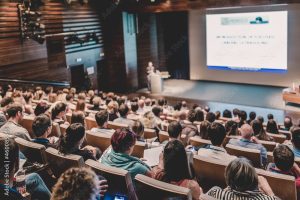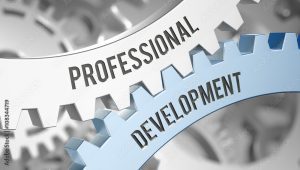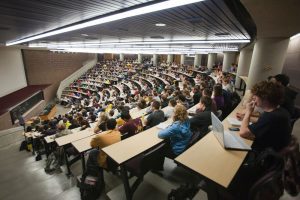A-Level
Teaching OCR A Level Biology for the first time
Course Code:
8683
£269.00+vat
ABOUT THIS COURSE
This course, refreshed for Autumn 2022 is specifically targeted and designed for all teachers new or recently new to teaching OCR A-Level Biology. The sessions are designed to improve teachers’ understanding of the OCR specification and ensure their students have the best opportunity to maximise potential grades.
The course will focus on an introduction to and overview of the specification, the key challenges, the standard, the transition from GCSE to A-Level, and provide all teachers with a range of effective teaching approaches, ideas and techniques, as well as key guidance in how to develop with advice on the exam, standards and best ways to prepare students.
Emphasis will also be on practical strategies on how to get the most from practical work and how to successfully build in the maths skills into your lessons.
BENEFITS OF ATTENDING
- Fully understand the complexities of the OCR A Level Biology specification
- Examine how to maximise success in the NEA Component
- Gain insight into the content, the exam structure and the how exams are marked
- Develop ways to improve outcomes across the ability range
- Examine lots of ideas on how the maths and practical skills can be embedded throughout the course
- Take away some activities that can be adapted for use when teaching a range of different topics
PROGRAMME
Overview of the AQA A-level Biology course including challenges and what to expect from pupils
10.00 – 10.30am- Key messages from the Summer 2022 Exams and preparing for 2023
- Recognising which areas will be most challenging for you and how to address these issues
- How to develop a teaching plan that reflects the assessment objective weightings and the areas which require more intense teaching
- Identifying your support network and making the most of it – particularly in a small department
- Ensuring topic areas which create the foundation for success – incorporating them into
Expectations at A Level
10.30 – 11.00am- The transition between GCSE and A level
- What do successful A Level students do?
- What do Grade A/A* response look like?
- What do Grade D responses look like?
Break
11.00 – 11.15amHow to Teach Component 1: Biological Processes
11.15 – 12.00pm- Practical strategies to develop students’ use of technical language and scientific terms
- Fresh teaching approaches
- Ways to build students’ confidence when applying scientific knowledge, principles and concepts in unfamiliar contexts
- Planning and teaching the some more demanding topics: meiosis, kidney and the chemiosmotic theory
- Making complicated concepts easy
How to Effectively Embed Maths Skills into your teaching
12.00 – 12.45pm- Analysing ways to embed maths skills in teaching to develop the skills of constructing and interpreting tables and graphs, using powers and indices, understanding measures of dispersion and solving algebraic equations.
- Demonstrating examples that can be used to build students’ confidence when translating information between graphical, numerical and algebraic forms and applying biological formulae in response to exam questions e.g. volume of a cylinder, standard deviation, RQ and population growth of microorganisms.
- Applying skills that students find difficult in exam questions e.g. using appropriate significant figures, percentage change, percentage error and statistical tests
- Teaching students to answer maths-based exam questions – using metacognitive modelling as a way to demonstrate how to think when faced with a challenging maths question. Using modelling as a scaffolding technique to support the less confident mathematicians.
Lunch
12.45 – 1.45pmEffectively teaching the Practical Skills
1.45 – 2.30pm- The essential terminology that needs constant reinforcement – the ‘language of measurement’ such as accuracy, precision and validity
- Direct assessment of practical skills in the PAGs – an overview of the required standards and what the moderators are looking for in the students’ evidence and in the teacher’s records
- Teaching experimental design – activities that build students’ confidence in selecting apparatus, equipment and techniques
- Developing students’ evaluation skills – strategies to help them identify limitations in experimental procedures and suggest improvements.
- Teaching students the skills of describing data, explaining data and making conclusions in response to exam questions
Key ideas for teaching Genetics, evolution and ecosystems
2.30 – 3.05pm- Teaching ideas for concepts that students find challenging such as linkage, speciation and the Hardy-Weinberg principle
- Strategies to ensure students have a clear understanding of biomass transfer, recycling and management of ecosystems
- Teaching genome sequencing –the knowledge and understanding that examiners will expect students to have and examples of how they may be asked to apply their knowledge and understanding and use it synoptically.
- Answering exam questions on Patterns of Inheritance. Providing students with strategies to answer questions requiring genetic diagrams and use of the chi-squared test and hardy-Weinberg principle.
- Analysing levels of response questions.
Afternoon break
3.05 – 3.10pmAchieving Unbelievable Results
3.30 – 4.00pm- What does it take to go from a C/D to an A/A*?
- How can you plan to overcome barriers?
- How can you build in the written exam to secure the highest marks
- How to gain full marks in the longer essay questions
- Revision strategies, tactics and exam techniques
This course, tailored to suit, can be delivered in your school. Discuss this further with our CPD team on 01625 532974 or click below to make an enquiry.
COURSE LEADER
Fiona Jones has taught A level Biology for 38 years, for much of this time in a management role. She has successfully led teams through curriculum change and has a breadth of experience encompassing many aspects of post-16 education.
Fiona is an experienced trainer and has delivered a range of courses for both students and teachers. As an A level examiner she understands how important it is that students acquire and develop the skills necessary for success.
WHO SHOULD ATTEND
- New or recently new teachers of OCR A Level Biology
- Heads of Biology
- Heads of Science
THIS COURSE INCLUDES
- A specially prepared folder of detailed notes, practical advice and guidance
- Notes prepared by the educational experts leading the course
- Expert produced PowerPoint presentations
- CPD Certificate of attendance
Description
ABOUT THIS COURSE
This course, refreshed for Autumn 2022 is specifically targeted and designed for all teachers new or recently new to teaching OCR A-Level Biology. The sessions are designed to improve teachers’ understanding of the OCR specification and ensure their students have the best opportunity to maximise potential grades.
The course will focus on an introduction to and overview of the specification, the key challenges, the standard, the transition from GCSE to A-Level, and provide all teachers with a range of effective teaching approaches, ideas and techniques, as well as key guidance in how to develop with advice on the exam, standards and best ways to prepare students.
Emphasis will also be on practical strategies on how to get the most from practical work and how to successfully build in the maths skills into your lessons.
BENEFITS OF ATTENDING
- Fully understand the complexities of the OCR A Level Biology specification
- Examine how to maximise success in the NEA Component
- Gain insight into the content, the exam structure and the how exams are marked
- Develop ways to improve outcomes across the ability range
- Examine lots of ideas on how the maths and practical skills can be embedded throughout the course
- Take away some activities that can be adapted for use when teaching a range of different topics
PROGRAMME
Overview of the AQA A-level Biology course including challenges and what to expect from pupils
10.00 – 10.30am
- Key messages from the Summer 2022 Exams and preparing for 2023
- Recognising which areas will be most challenging for you and how to address these issues
- How to develop a teaching plan that reflects the assessment objective weightings and the areas which require more intense teaching
- Identifying your support network and making the most of it – particularly in a small department
- Ensuring topic areas which create the foundation for success – incorporating them into
Expectations at A Level
10.30 – 11.00am
- The transition between GCSE and A level
- What do successful A Level students do?
- What do Grade A/A* response look like?
- What do Grade D responses look like?
Break
11.00 – 11.15am
How to Teach Component 1: Biological Processes
11.15 – 12.00pm
- Practical strategies to develop students’ use of technical language and scientific terms
- Fresh teaching approaches
- Ways to build students’ confidence when applying scientific knowledge, principles and concepts in unfamiliar contexts
- Planning and teaching the some more demanding topics: meiosis, kidney and the chemiosmotic theory
- Making complicated concepts easy
How to Effectively Embed Maths Skills into your teaching
12.00 – 12.45pm
- Analysing ways to embed maths skills in teaching to develop the skills of constructing and interpreting tables and graphs, using powers and indices, understanding measures of dispersion and solving algebraic equations.
- Demonstrating examples that can be used to build students’ confidence when translating information between graphical, numerical and algebraic forms and applying biological formulae in response to exam questions e.g. volume of a cylinder, standard deviation, RQ and population growth of microorganisms.
- Applying skills that students find difficult in exam questions e.g. using appropriate significant figures, percentage change, percentage error and statistical tests
- Teaching students to answer maths-based exam questions – using metacognitive modelling as a way to demonstrate how to think when faced with a challenging maths question. Using modelling as a scaffolding technique to support the less confident mathematicians.
Lunch
12.45 – 1.45pm
Effectively teaching the Practical Skills
1.45 – 2.30pm
- The essential terminology that needs constant reinforcement – the ‘language of measurement’ such as accuracy, precision and validity
- Direct assessment of practical skills in the PAGs – an overview of the required standards and what the moderators are looking for in the students’ evidence and in the teacher’s records
- Teaching experimental design – activities that build students’ confidence in selecting apparatus, equipment and techniques
- Developing students’ evaluation skills – strategies to help them identify limitations in experimental procedures and suggest improvements.
- Teaching students the skills of describing data, explaining data and making conclusions in response to exam questions
Key ideas for teaching Genetics, evolution and ecosystems
2.30 – 3.05pm
- Teaching ideas for concepts that students find challenging such as linkage, speciation and the Hardy-Weinberg principle
- Strategies to ensure students have a clear understanding of biomass transfer, recycling and management of ecosystems
- Teaching genome sequencing –the knowledge and understanding that examiners will expect students to have and examples of how they may be asked to apply their knowledge and understanding and use it synoptically.
- Answering exam questions on Patterns of Inheritance. Providing students with strategies to answer questions requiring genetic diagrams and use of the chi-squared test and hardy-Weinberg principle.
- Analysing levels of response questions.
Afternoon break
3.05 – 3.10pm
Achieving Unbelievable Results
3.30 – 4.00pm
- What does it take to go from a C/D to an A/A*?
- How can you plan to overcome barriers?
- How can you build in the written exam to secure the highest marks
- How to gain full marks in the longer essay questions
- Revision strategies, tactics and exam techniques
Additional information
| Location and Date | London | Thursday 10 November 2022 |
|---|





